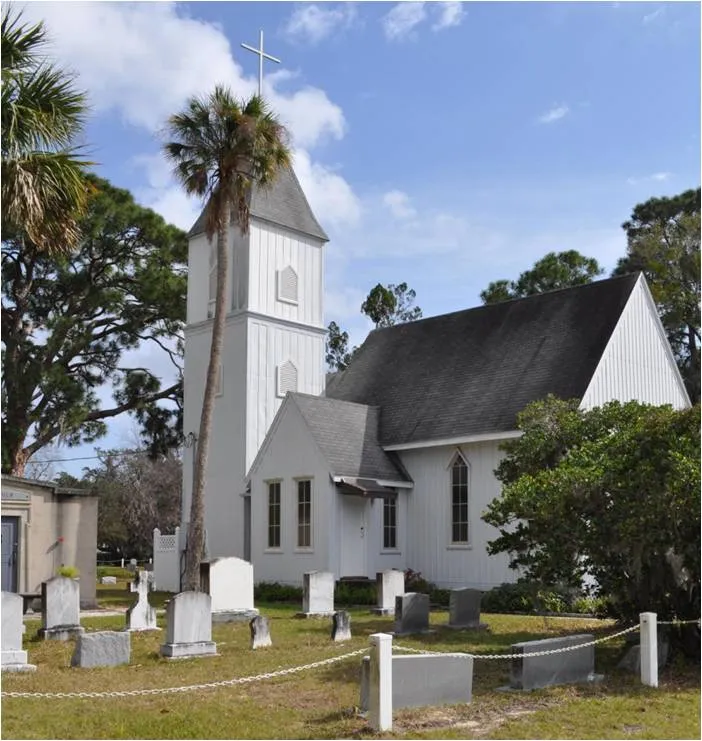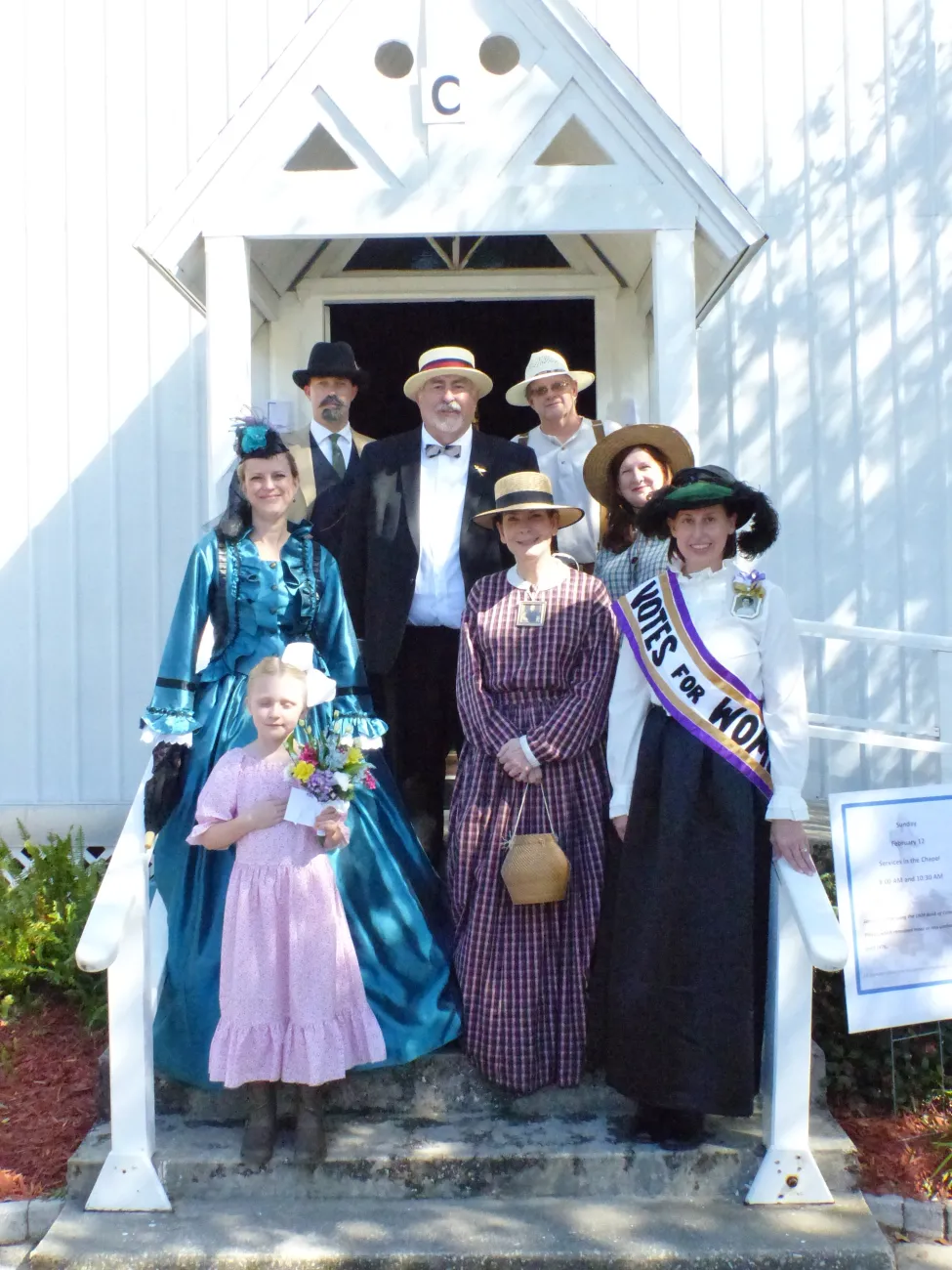Touring an historic cemetery can be like visiting a museum.
As you walk among the headstones, markers, and memorials, you can gain insight into the lives of individual pioneers, people who gave their lives in service to their country, and the lives of children cut tragically short.
Guided, themed cemetery tours will be part of the seventh annual Pioneer Day to be held Saturday, February 10th from 10 am to 4 pm at St. Luke’s Episcopal Church and the historic Sams House, both on North Tropical Trail, Merritt Island.
The Sams, LaRoche, Porcher, and other families came from the Charleston, South Carolina area after the Civil War to settle on north Merritt Island. Two historic Sams family homes are preserved in the Pine Island Conservation Area.
The congregation of St. Luke’s started meeting in 1879, and by 1888 built a Wooden Gothic style church that was listed on the National Register of Historic Places in 1990.
Tom McFarland is a member of both St. Luke’s Episcopal Church and the Pine Island Preservation Society, and an organizer of Saturday’s Pioneer Day event on north Merritt Island.
“The early church services were held in John Sams’ house in north Merritt Island, and he was one of the founders of the church,” says McFarland. “He hosted Bishop Young on his first visit to Brevard County, and Bishop Young was the one who approved having a church built on north Merritt Island for the Episcopalians in the area. Most of the pioneers were from South Carolina and they were mostly Episcopalians, and were eager to have an established church here.”
One of Saturday’s themed tours of the historic cemetery at St. Luke’s is from “An Archaeologist’s Perspective.” Consulting early church records and doing new research, Molly Thomas documented the cemetery.
“The first step is researching the history of the property,” says Thomas. “Important details I look for include ownership, expansions, and other changes to the property line. The second step is measuring the parameter of the property and taking pictures. This may seem mundane, but property lines can change, neighbors can build without permits, etc. and often, such changes go unnoticed at sites that receive few visitors. Encroachment can become an issue when there are human remains at stake, and ensuring that the records match reality can avoid such issues.”
The third step Thomas follows is to do what she calls a “head count.” This includes identifying both marked and unmarked burials. Since St. Luke’s had excellent records, she was able to cross reference their plot map and burial ledger with what was actually observable in their cemetery.
“Compared to most cemeteries I have worked on, St. Luke’s had great records and takes impeccable care of their property,” says Thomas. “But after a century, there are bound to be some errors.”
One man’s grave was indicated on the cemetery map as having “no stone.”
“I discovered his stone underneath about three inches of pine needles,” says Thomas. “It had been there the whole time. I was the first one to see it in over a decade, and it felt good to give him his identity back.”
Thomas submitted a detailed report to the state’s Master Site File, including an updated map of the property.
Other themed cemetery tours during the Pioneer Day event will feature costumed guides portraying people who are buried there. They include journalist and controversial archaeologist Vernon Lamb, pioneer and pilot Laurence Porcher Allen, early photographer Julia Porcher, and innovative citrus grower E.B. Porcher. Members of the Sams family will portray their ancestors who are buried in the cemetery.
Tuskegee Airman, Colonel Edwin Cowen, is also buried at St. Luke’s.
“He has no marker, and that’s something we want to change,” says McFarland. “We really want to honor his presence in our cemetery and his historic contribution to civil rights and to the United States Air Force.”
Other Pioneer Day activities include live music, living history demonstrations, educational exhibits, a crafts fair, and children’s games. There will be farmer’s market vendors, food trucks, homemade soup, and a fish fry dinner. Talks throughout the day include presentations on Florida’s ancient canoes, Cape Canaveral history, and the legacy of African American Dennis Sawyer.

